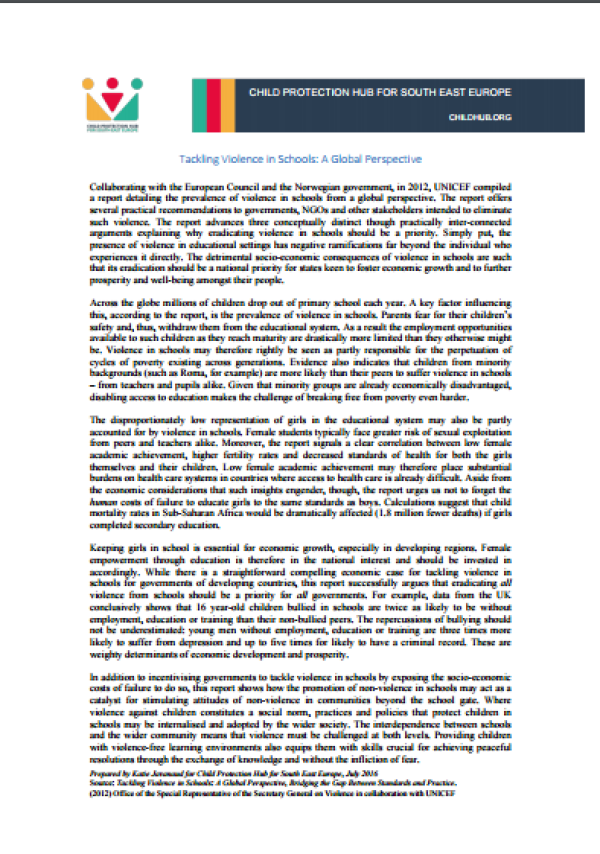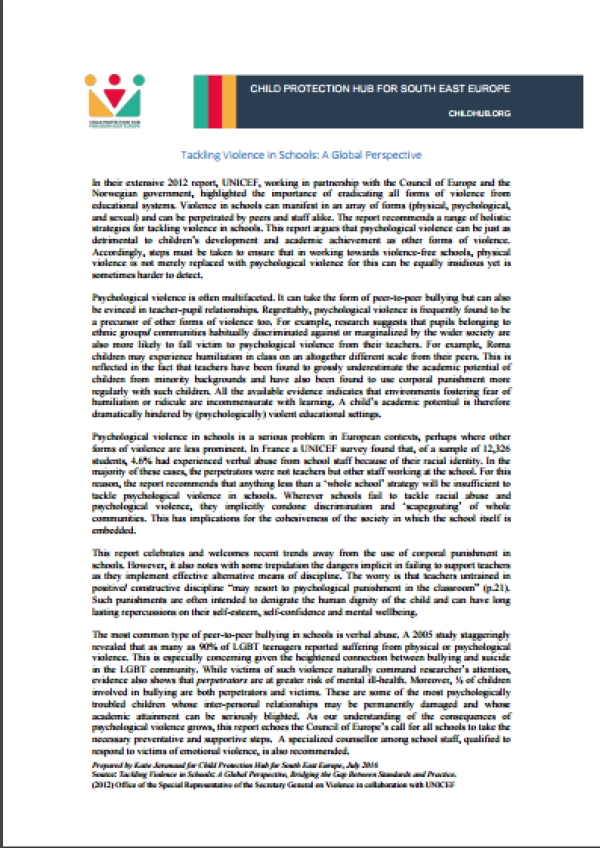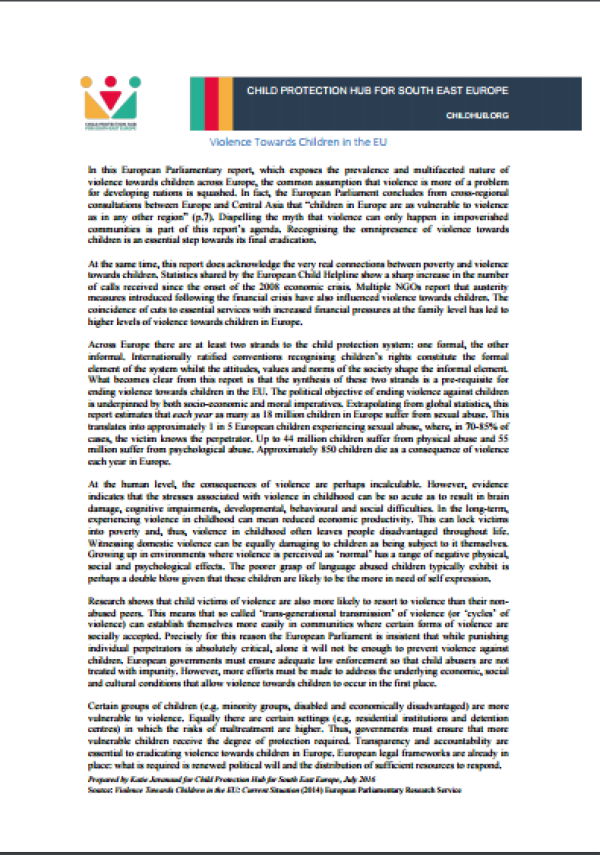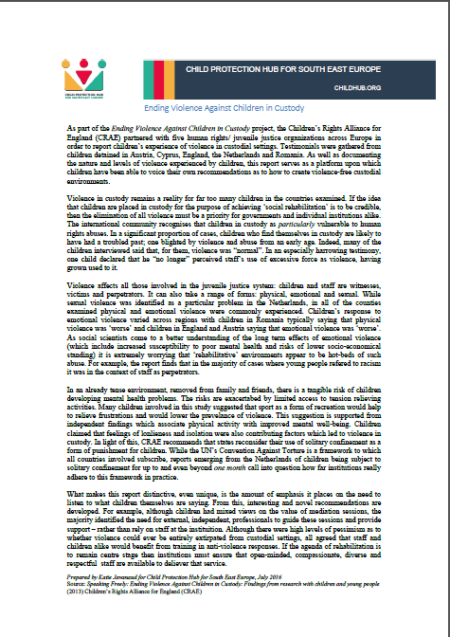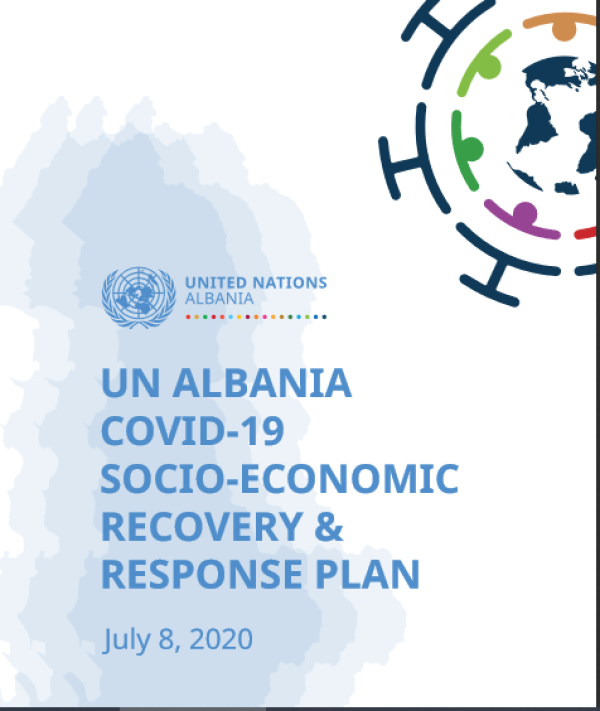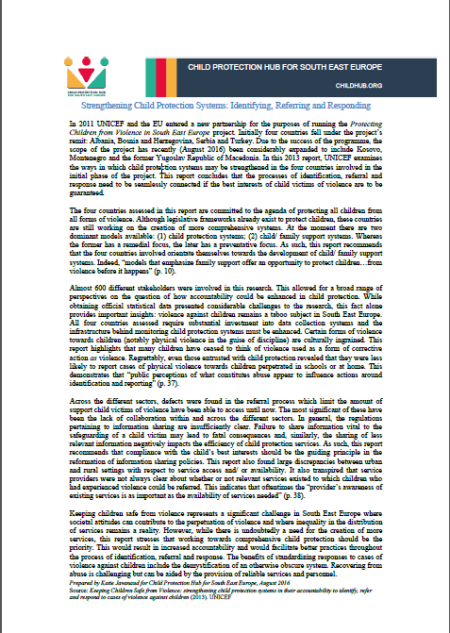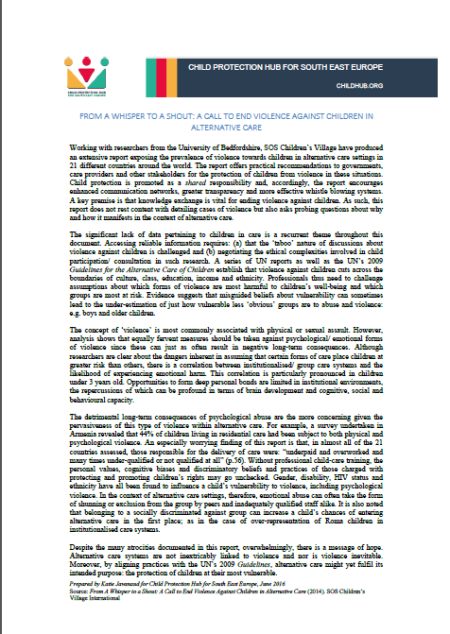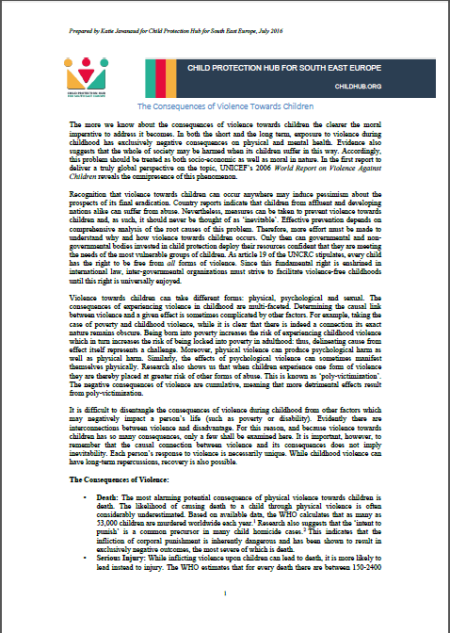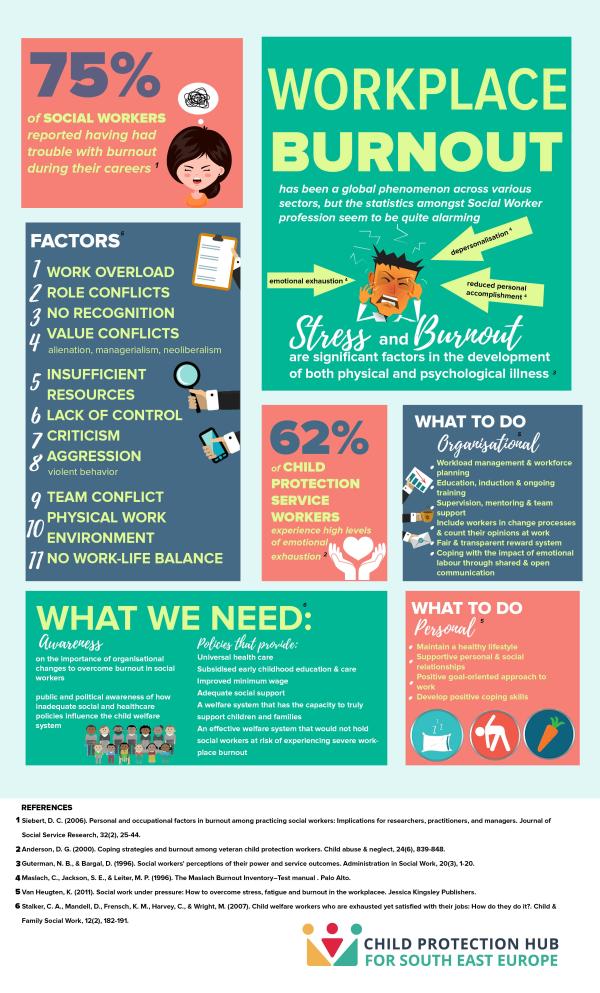
Collaborating with the European Council and the Norwegian government, in 2012, UNICEF compiled a report detailing the prevalence of violence in schools from a global perspective. The report offers several practical recommendations to governments, NGOs and other stakeholders intended to eliminate such violence. The report advances three conceptually distinct though practically inter-connected arguments explaining why eradicating violence in schools should be a priority. Simply put, the presence of violence in educational settings has negative ramifications far beyond the individual who experiences it directly. The detrimental socio-economic consequences of violence in schools are such that its eradication should be a national priority for states keen to foster economic growth and to further prosperity and well-being amongst their people.
Across the globe millions of children drop out of primary school each year. A key factor influencing this, according to the report, is the prevalence of violence in schools. Parents fear for their children’s safety and, thus, withdraw them from the educational system. As a result the employment opportunities available to such children as they reach maturity are drastically more limited than they otherwise might be. Violence in schools may therefore rightly be seen as partly responsible for the perpetuation of cycles of poverty existing across generations. Evidence also indicates that children from minority backgrounds (such as Roma, for example) are more likely than their peers to suffer violence in schools – from teachers and pupils alike. Given that minority groups are already economically disadvantaged, disabling access to education makes the challenge of breaking free from poverty even harder.
The disproportionately low representation of girls in the educational system may also be partly accounted for by violence in schools. Female students typically face greater risk of sexual exploitation from peers and teachers alike. Moreover, the report signals a clear correlation between low female academic achievement, higher fertility rates and decreased standards of health for both the girls themselves and their children. Low female academic achievement may therefore place substantial burdens on health care systems in countries where access to health care is already difficult. Aside from the economic considerations that such insights engender, though, the report urges us not to forget the human costs of failure to educate girls to the same standards as boys. Calculations suggest that child mortality rates in Sub-Saharan Africa would be dramatically affected (1.8 million fewer deaths) if girls completed secondary education.
Keeping girls in school is essential for economic growth, especially in developing regions. Female empowerment through education is therefore in the national interest and should be invested in accordingly. While there is a straightforward compelling economic case for tackling violence in schools for governments of developing countries, this report successfully argues that eradicating all violence from schools should be a priority for all governments. For example, data from the UK conclusively shows that 16 year-old children bullied in schools are twice as likely to be without employment, education or training than their non-bullied peers. The repercussions of bullying should not be underestimated: young men without employment, education or training are three times more likely to suffer from depression and up to five times for likely to have a criminal record. These are weighty determinants of economic development and prosperity.
In addition to incentivising governments to tackle violence in schools by exposing the socio-economic costs of failure to do so, this report shows how the promotion of non-violence in schools may act as a catalyst for stimulating attitudes of non-violence in communities beyond the school gate. Where violence against children constitutes a social norm, practices and policies that protect children in schools may be internalised and adopted by the wider society. The interdependence between schools and the wider community means that violence must be challenged at both levels. Providing children with violence-free learning environments also equips them with skills crucial for achieving peaceful resolutions through the exchange of knowledge and without the infliction of fear.


